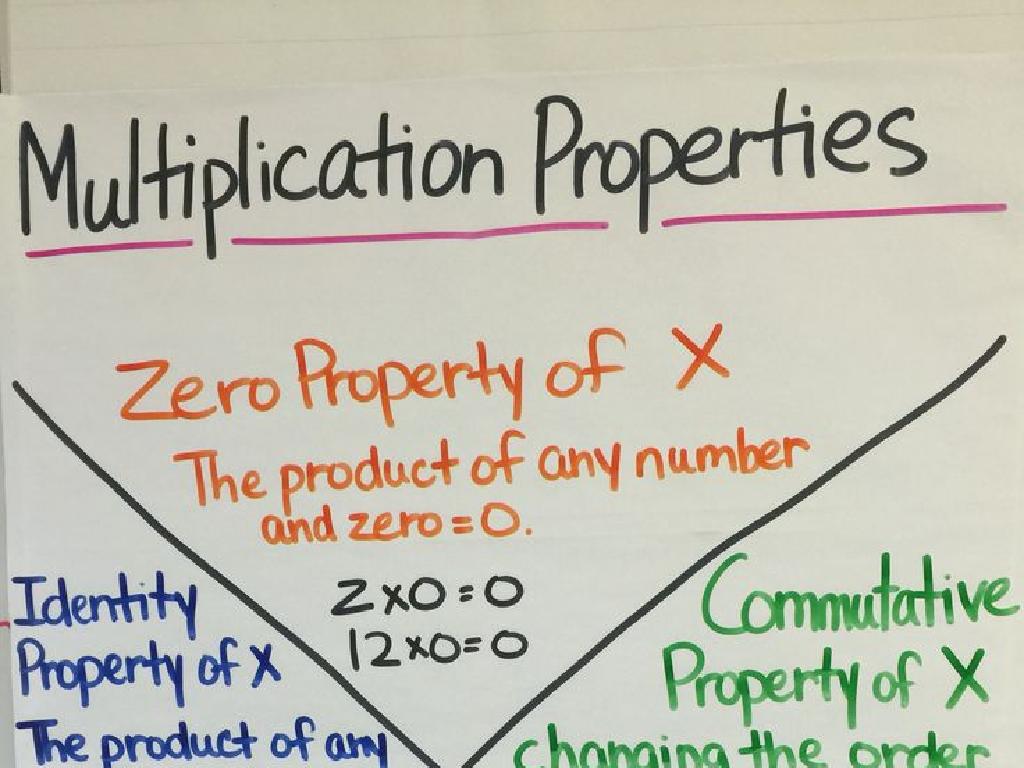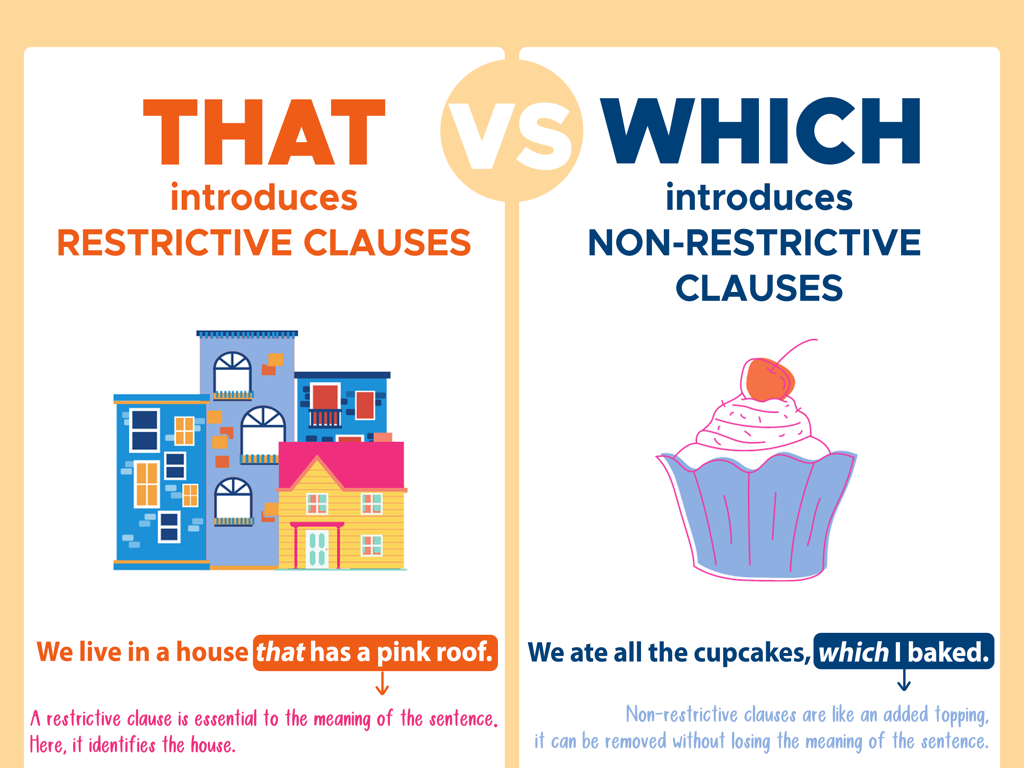Evaluate Numerical Expressions Involving Integers
Subject: Math
Grade: Sixth grade
Topic: Operations With Integers
Please LOG IN to download the presentation. Access is available to registered users only.
View More Content
Evaluating Numerical Expressions with Integers
– Understanding integers
– Integers include positive, negative numbers, and zero
– Defining numerical expressions
– Expressions combine numbers, integers, and operations
– Today’s goal: evaluation
– Learn to calculate the value of expressions with integers
– Practice with real examples
|
This slide introduces the concept of integers and numerical expressions to sixth-grade students. Begin by explaining that integers are whole numbers that can be positive, negative, or zero. Then, define numerical expressions as combinations of numbers and operations such as addition, subtraction, multiplication, and division. Today’s objective is to teach students how to evaluate these expressions, especially when they involve integers. Provide examples and practice problems to help students understand how to work with integers in different scenarios. Encourage them to think about where they might see integers and numerical expressions in real life, such as in temperatures, bank transactions, or sports scores.
Understanding Integers
– Define integers
– Integers include whole numbers and their negatives, excluding fractions and decimals.
– Examples of integers
– Positive: 1, 2, 3; Negative: -1, -2, -3
– Positive vs negative integers
– Positive integers are above zero, negative integers are below zero.
– Integer placement on a number line
– A visual tool to locate and compare integers.
|
Begin the lesson by defining integers as the set of whole numbers including zero, positive whole numbers, and their negative counterparts. Provide clear examples of both positive and negative integers to solidify understanding. Explain the concept of zero as the central point on a number line, with positive integers to the right and negative integers to the left. Emphasize that integers do not include fractions or decimals. Use a number line in class to demonstrate how integers are placed and how to use it to understand the relationship between different integers. This foundational knowledge will be crucial for evaluating numerical expressions involving integers.
Understanding Numerical Expressions with Integers
– Components of numerical expressions
– Terms, coefficients, constants, operators
– Expressions vs. Equations
– Expressions represent values; equations show equality
– Examples with integers
– 3 + (-5), 7 * (-2), (-8) / 4
– Practice evaluating expressions
– Calculate the value of expressions like 2 – (-3)
|
This slide introduces students to the basics of numerical expressions, highlighting the difference between expressions and equations. Start by explaining the components of numerical expressions, such as terms, coefficients, constants, and operators. Clarify that expressions are combinations of numbers and symbols that represent a value, while equations are statements that two expressions are equal. Provide examples of numerical expressions involving integers to illustrate how they work. Encourage students to practice evaluating expressions by calculating their value, reinforcing their understanding of integer operations. This foundational knowledge is crucial for their success in algebra.
Mastering Order of Operations: PEMDAS
– Grasp the PEMDAS rule
– PEMDAS: Parentheses, Exponents, Multiplication/Division, Addition/Subtraction
– Apply PEMDAS to expressions
– Use PEMDAS to solve 3*(2^2) – (1+4)
– Work on practice problems
– Solve practice problems to reinforce PEMDAS
– Share solutions and strategies
|
This slide introduces the concept of PEMDAS, which is crucial for correctly evaluating numerical expressions involving integers. PEMDAS stands for Parentheses, Exponents, Multiplication and Division (from left to right), Addition and Subtraction (from left to right). Start by explaining each component of PEMDAS with examples. Then, demonstrate how to apply the order of operations to solve expressions step by step. Provide practice problems for students to work on individually or in groups, and encourage them to explain their thought process as they apply PEMDAS. Conclude with a discussion where students can share their solutions and any strategies they found helpful.
Evaluating Expressions with Integers
– Substitute values for variables
– Replace the variable with the given integer
– Follow the order of operations
– Remember PEMDAS: Parentheses, Exponents, Multiplication/Division, Addition/Subtraction
– Solve a practice expression
– Example: For 2x – 3 when x = 5, substitute to get 2(5) – 3
– Discuss solutions as a class
– Share different methods and answers, ensuring understanding
|
This slide introduces the process of evaluating expressions with integers. Start by explaining how to substitute integers for variables in an expression. Emphasize the importance of following the order of operations, using the acronym PEMDAS as a mnemonic. Work through a practice expression as a class, inviting students to participate in solving it step by step. After solving, discuss the solutions as a class to address any misunderstandings and to highlight different methods of reaching the answer. Encourage students to ask questions and to explain their reasoning to the class.
Let’s Practice Together: Evaluating Expressions
– Class example problem walkthrough
– We ll solve problems as a group, step by step.
– Discuss expression-solving strategies
– Share tips like order of operations and integer rules.
– Peer discussion on problem-solving
– Talk with classmates to tackle tricky problems.
– Encourage collaborative learning
– Learning together helps everyone understand better.
|
This slide is designed to facilitate a collaborative classroom activity focused on evaluating numerical expressions with integers. Start by solving example problems together as a class, ensuring to demonstrate each step clearly. Discuss various strategies for solving expressions, such as the order of operations (PEMDAS) and rules for adding, subtracting, multiplying, and dividing integers. Encourage students to engage in peer discussions to share their thought processes and solutions. This peer-to-peer interaction can help students learn from each other and clarify their understanding. As a teacher, circulate the room to guide discussions, provide hints, and ensure that each student is actively participating. The goal is to create an interactive learning environment where students feel comfortable to ask questions and support one another.
Class Activity: Integer Expression Challenge
– Break into small groups
– Each group gets unique expressions
– Evaluate your expressions
– Use operations like addition, subtraction, multiplication, division
– Present solutions and methods
– Explain your thought process and steps taken
|
This activity is designed to promote collaborative learning and to reinforce the concept of evaluating numerical expressions with integers. Divide the class into small groups, ensuring a mix of abilities in each. Provide each group with a set of unique integer expressions to evaluate. Encourage the use of different operations such as addition, subtraction, multiplication, and division. After the groups have worked through their expressions, have them present their solutions to the class, explaining the steps and thought processes they used. This will help students learn from each other and gain a deeper understanding of the topic. Possible expressions to assign could include: ‘(-3) + 7′, ’12 x (-5)’, ‘(-8) ÷ 4′, or ’15 – (-9)’. Ensure that each group has a different set of problems to encourage a variety of solutions during the presentations.
Wrapping Up: Integers & Expressions
– Review of expression evaluation
– Significance of order of operations
– PEMDAS ensures accurate calculations
– Homework: Practice worksheet
– Complete worksheet on integer expressions
– Keep practicing for mastery
– Practice is key to understanding math concepts
|
As we conclude today’s lesson, it’s important to recap the main points about evaluating numerical expressions with integers. Emphasize the importance of following the order of operations, often remembered by the acronym PEMDAS (Parentheses, Exponents, Multiplication and Division, Addition and Subtraction), to ensure accurate calculations. For homework, students are assigned a practice worksheet that will help reinforce today’s lesson and provide additional practice to aid in mastery of the concepts. Encourage students to attempt all problems and remind them that practice is essential for understanding math. The next class will begin with a review of the homework to address any questions or difficulties encountered.






